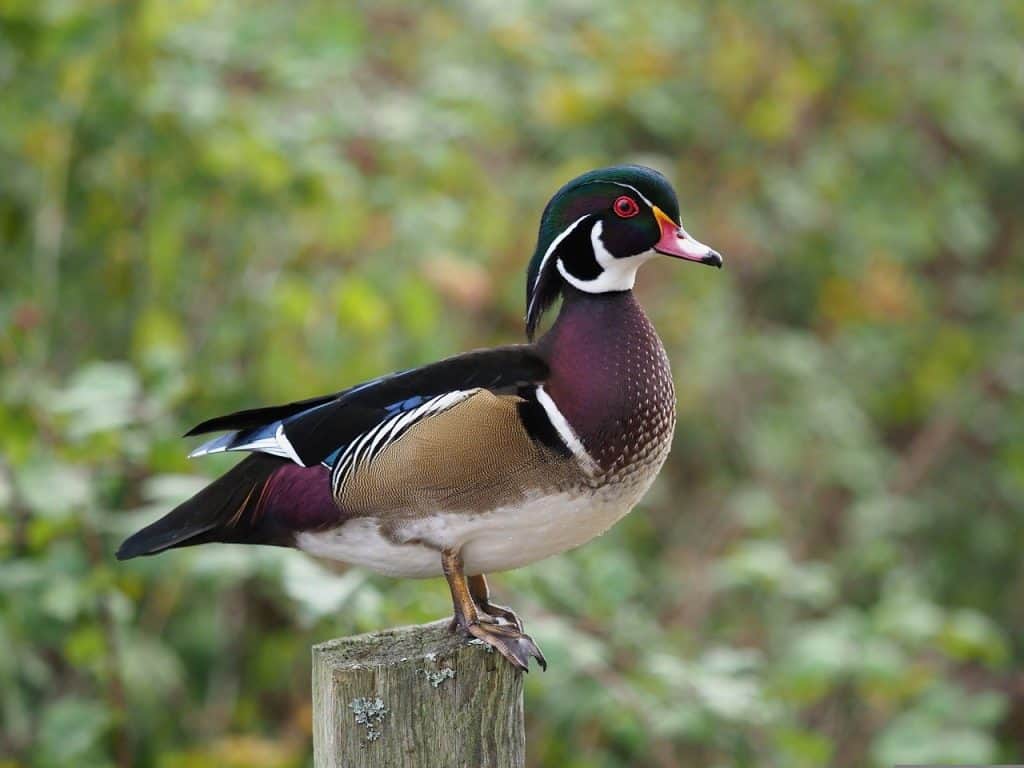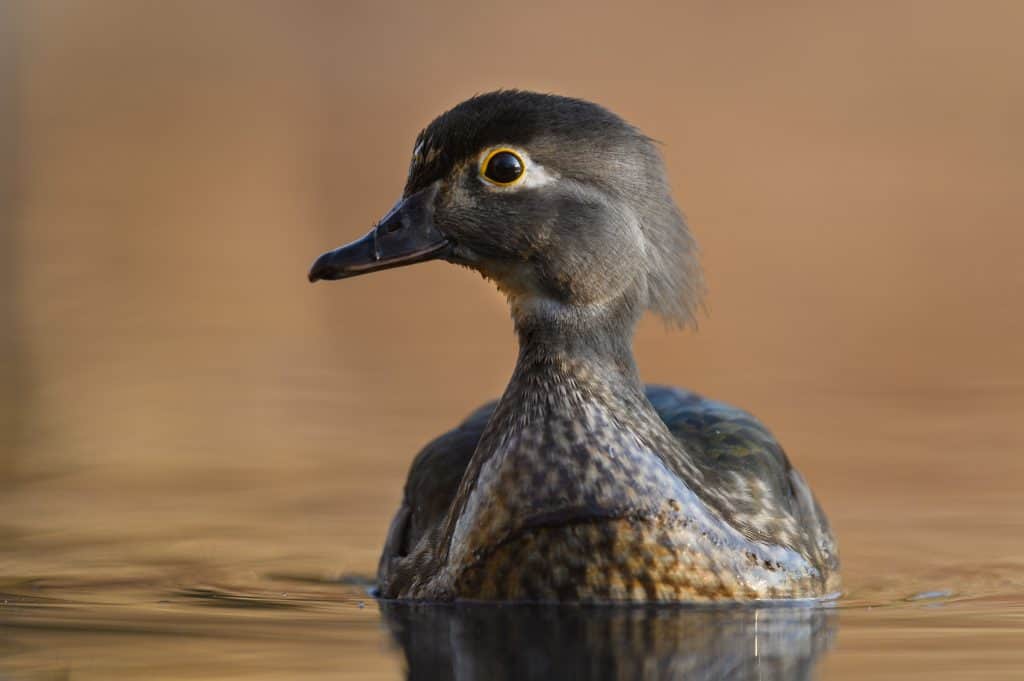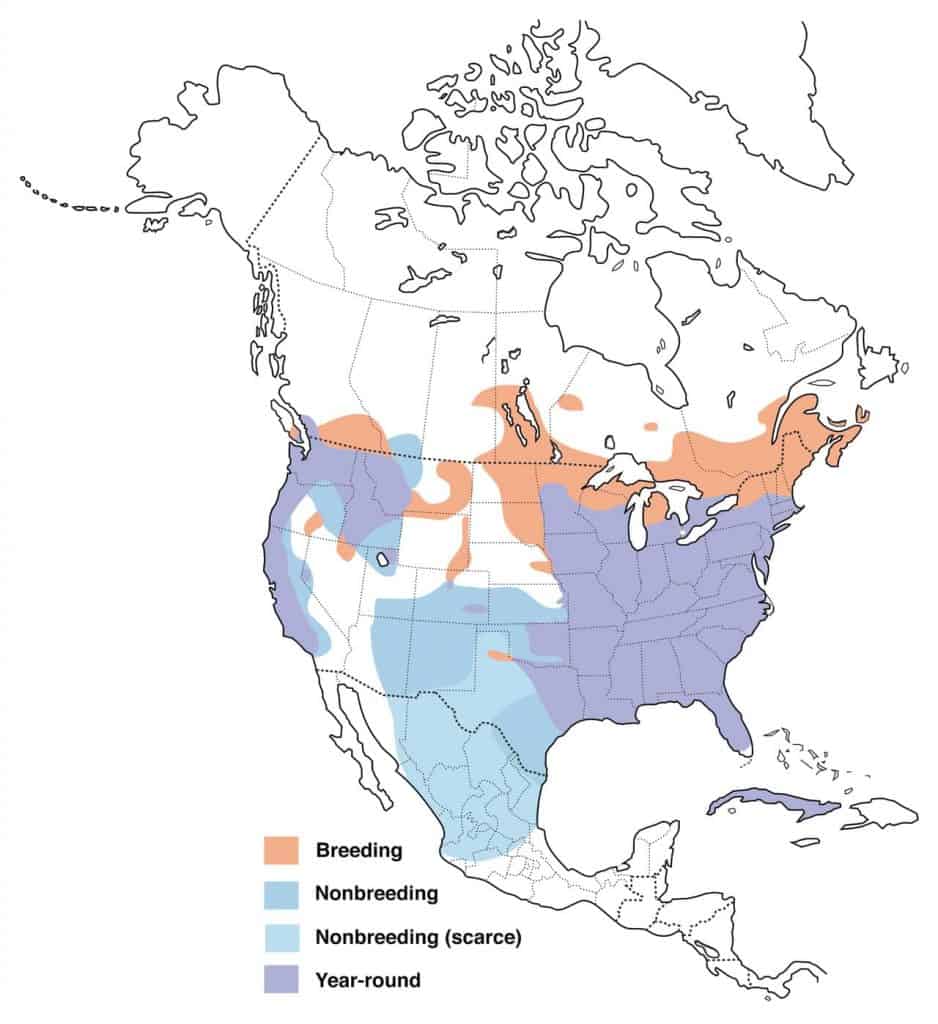

Appearance: The wood duck is a large bird about 19-22″ long and the male sports an array of colors. The male’s head and crest are metallic purplish-green, the sides of the face are black, a white stripe runs along the neck and a smaller one goes up each cheek. Their chest and the rump are dark red, and the sides are olive-yellow with black & white stripes on the edges, the belly is white, tail and back are black. The eyes are red, bill white with red on each side. The top of the bird’s head and crest are metallic purplish-green. The sides of the face are black, and a white stripe runs along the neck. A small white stripe also extends up each cheek. The chest and the rump are dark red, and the sides are a drab yellow with black and white stripes at the edges. The wood duck’s belly is white, its tail and back are black, and its wings are black and blue. The female looks vastly different. She is gray-brown with a white-speckled breast
Diet: The wood duck’s diet varies widely. They prefer water plants, seeds, fruits, and insects but will also eat nuts and grains.
Feeder food: They don’t visit feeders.
Habitat: Wet areas including swamps, marshes, streams & creeks as well as small lakes.
Nesting: Wood ducks are cavity nesters and will gladly move into your manmade nesting box is you put one up. When using a tree cavity, they opt for very large trees – 1-2′ in diameter. The cavity is anywhere from 2-60 feet in the air. They have 1-2 broods/season and 6-16 eggs/brood. Eggs are shiny cream white to light tan. Incubation is from 28-37 days and fledglings leave the nest at about 56-70 days.
Range Map


